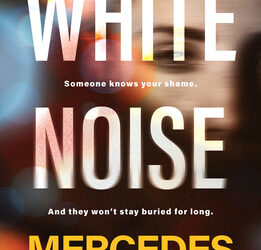My sister often asks me, “how do you write like that?”
Mostly, I tell her, “I don’t know.”
She asks, “But what makes you know what you’re going to write? Like, do you just sit there and write?”
“Yes,’ I say. “But I don’t know how I’m doing it.”
Back when I was studying creative writing at Curtin University of Technology, I had the most incredible teacher Dr Brett D’Arcy who taught us everything there was to know about literature. We were analysing the likes of Richard Flanagan, Helen Garner, Margaret Atwood, Gabriel Garcia Marquez, Ian McEwan, Ernest Hemingway- just to name a few geniuses.
Every session, we would start just by picking out the intricate lines in a story, marveling at the way the creator had portrayed something so every-day into an image that teased our every senses. And then we went onto technique. And then rules. The rules that were meant to be broken, but probably shouldn’t be. But more on that later.
He taught us techniques like using objective correlatives, motifs, allegory, psychic distance, infinite verb phrases, third person omniscient, second person pov to manipulate the reader. These terms were a whole other language for me to learn. But I became obsessed with using them, and not using them when they weren’t needed.
I never understood that starting a scene using psychic distance could become completely cinematic, steering the reader, taking them on a journey from somewhere far away, until the narrators voice (me) could morph into the character. Wow, I was blown away by it. Used effectively, this technique can really blur the boundaries between what I wanted to say and what I wanted the reader to picture. I had complete control of them.
Objective correlatives meant I could “systematically represent emotions through a group of events or subjects.” Again, another powerful technique that could persuade a reader to feel something without them being aware.
He told me, “Don’t write airport fiction. You need to write literary fiction with a bit of commercial in it.” He had a lot of rules.
1.No using the word sighed, grumbled, growled, moaned, shouted, yelled, roared, thunder. Just say “said”
“Why?” I said.
“Because you should be able to show us how they’re saying it by the smart dialogue.” So my dialogue became smart.
2. No adverbs.
“Why?” I said.
“Because you should be showing us, not telling us that they ran “happily”. So I cut them all out and have never used them again.
3. No “Yes” or “No” in any dialogue. Ever.
“Why?” I said.
“Because it’s boring and unnecessary. You can reply without it and get the same answer.”
There’s lots more.
x No filtering. She “looked” “turned” “smelled”
x No long-winded sentences in dialogue. Because again, it’s boring and we don’t talk like that.
x No more than 1 sex scene. And make it real and tasteful.
x No character’s looking at their own reflection and talking about it. Because, as if we’d do that ourselves. “Holly has long golden locks that curl at the ends, bouncing over her shoulders. Her sparkly green eyes and small pointed nose…..” STOP! This brings us to…
x Only 3 concrete descriptions about people and places. And nothing to do with eye/hair colour. Bulldog face, patchy shave, cracked lips. Hopefully these 3 descriptions give you enough of a image of who this character is. And maybe even that’s too much.
x Infinite verb phrases are all out. Picking up my pencil, I wrote and walked into the kitchen. Um… We can’t pick up a pencil, write and walk into the kitchen all at once.
But what about people who break the rules? Take Cormac McCarthy’s, The Road, who breaks rules the whole way through. But it works, and works well! There are so many more rules, each that I apply in my writing, without even thinking of it. There are many more techniques that I now naturally do. I’m learning even more now with Curtis Brown and my tutor Simon Ing.
Take this feedback I received from my last homework task with Curtis Brown. The reader’s image and idea of the scene is exactly the way I intended it. I don’t know how I wrote it, but i just visualised it and got writing- as most writers do.
“@Holly_Craig, I know you’re writing a thriller and you’ve taken Simon’s assignment and used it to stark effect. You’ve managed to incorporate iterative development into a forward-moving and suspenseful scene. You get a real sense of menace and the idea that Tom has “waited” for her to fall asleep over the years…chills.
And yet you haven’t written Tom as a mustache-twirling bad guy, either. It’s possible this is all in your protagonist’s head. Nothing about his dialogue indicates evil intent. In fact, on their own, his lines could almost be interpreted as reassuring: “We’re not the only ones here.” He’s trying to talk her down. Because he’s concerned? Or because he’s hiding something?
We’re in your/her head so the implication is that over the years she’s began to doubt him: “…concerned thoughts invading me.” This is certainly not how trusting partners think of one another. A loved one watching you fall asleep can be considered beautiful. Here, it’s become a source of fear and now we understand why she’s creeping around the house and putting up false facades. The trust has been broken and you have this unique ability to take what otherwise would be normal, reassuring moments and make them ominous: “You have nothing to worry about here, honey.” Except she does, doesn’t she? And we know that because of how you’ve set up this scene and used the iterative to educate us how she’s begun to interpret normal expressions with concern.
This is very Hitchcockian and very astute suspense writing. This has a very classical vibe, like Daphne du Maurier or Graham Greene. Yet in a modern context, perhaps a bit Paula Hawkins. Horror in an everyday setting, circumstance and dialogue is tough to pull off but you’ve done so adroitly here.”
The truth is, I don’t know how I write or why I write the way I do. Are we taught to write or just born with the gift? I can say with conviction, that Brett D’Arcy my supervisor has a lot to do with it.
Thanks Brett.
And thanks for stopping by!
On Monday, I’ll be posting my interview with Holden Sheppard about his road to publication. Stay tuned!
Holly




0 Comments